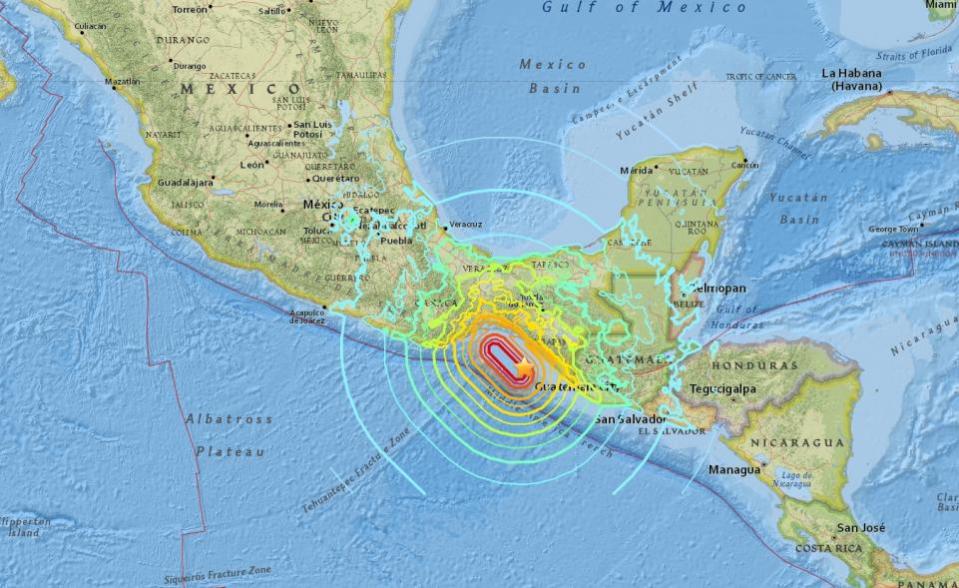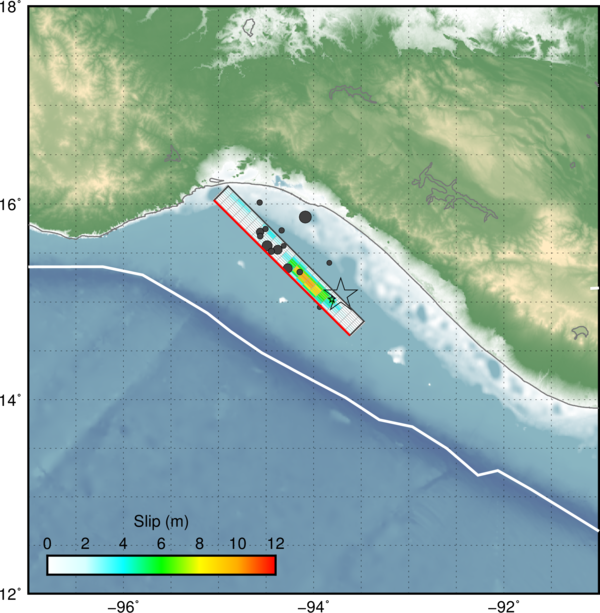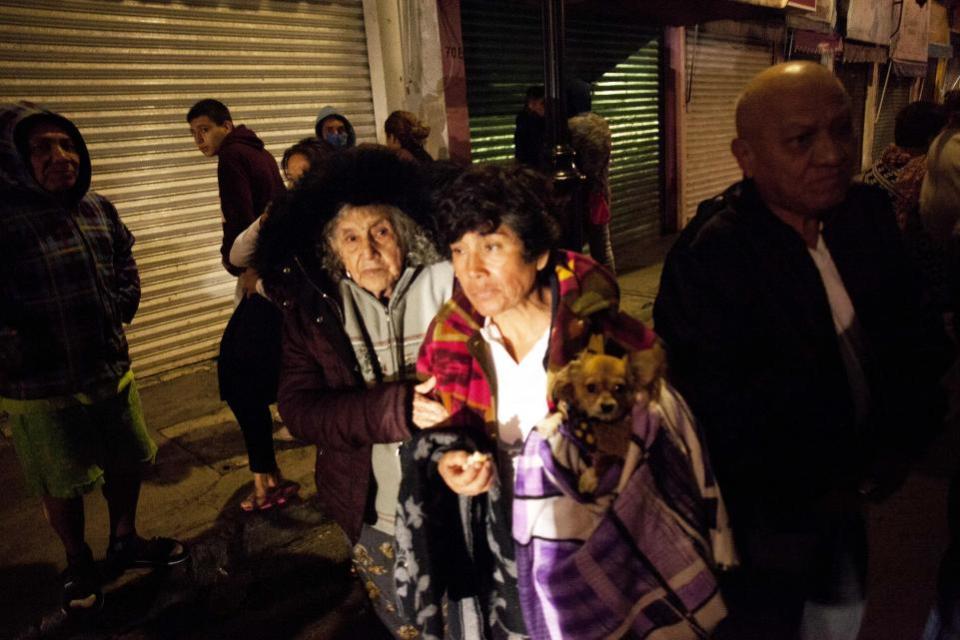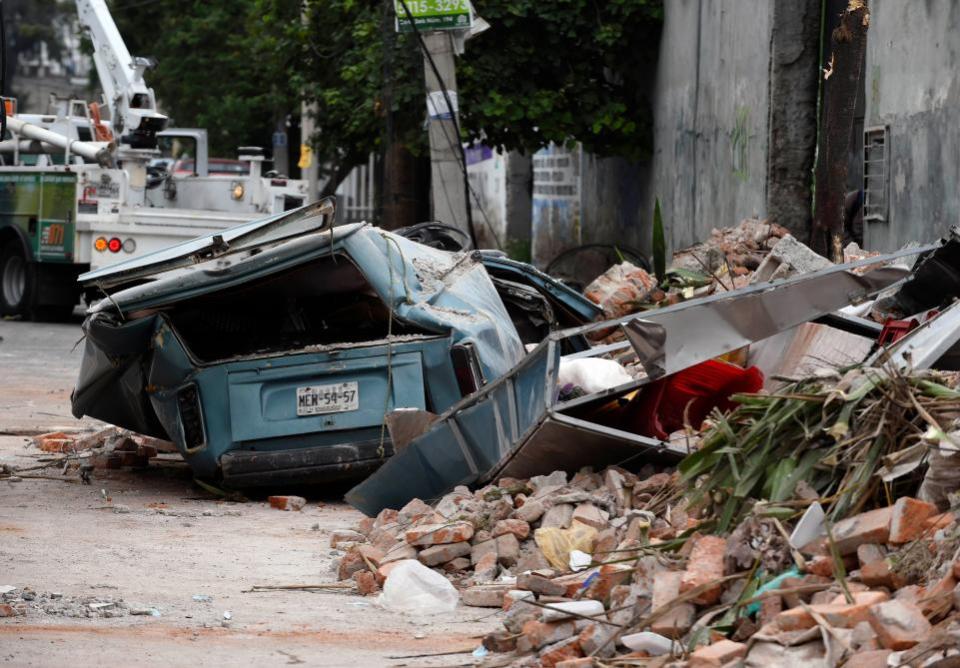UPDATE: Mexico Earthquake Death Toll Rises
UPDATE | The massive earthquake that hit Mexico late on September 7, killing close to 60 people, is the biggest in the region in almost a century. Seismologists now say the magnitude 8.1 quake was so large it moved the fault up by 32 feet, as the Cocos and North American tectonic plates collided.
The epicenter of the earthquake was off the coast of Mexico and Guatemala, 54 miles southwest of Pijijiapan. It struck at a depth of 69.7 kilometers (43.3 miles), data from the U.S. Geological Survey showed. Initially, a tsunami warning was issued, with waves up to 10 feet high, but this has since been lifted.

Since the initial quake, many aftershocks have been recorded, ranging between magnitude 4.3 and 5.7. Seismologists are currently monitoring for more, as these could pose a major risk to the buildings already destabilized by the initial 8.1 earthquake, David Galloway, from the British Geological Survey, tells Newsweek.
A magnitude of “8.1 is a major earthquake, and I’m not surprised there’s lots of damage. I think there will be more reports of people having been killed and injured as time goes on, as we get more information,” Galloway said. “Communications often go down with big earthquakes. So far we’ve got reports of 15 killed and many more injured, but I expect that figure to rise.”

Several reports put the death toll at 58, with most killed in the states of Oaxaca, Chiapas and Tabasco. Photos and video from regions affected show widespread damage. The British Geological Survey estimates half a million people experienced severe shaking.

One of the reasons earthquakes in this area cause so much damage is the ground beneath. Mexico City is built on a sedimentary basin. This is a valley where the rock is soft and loose, meaning the shaking is amplified. It also means aftershocks can continue to cause damage after the main earthquake has struck.
“The shaking is stronger, so the buildings will shake more,” Galloway says. “We’ve had quite a lot of reports that buildings have collapsed. A lot of the time, the earthquake itself releases a lot of the stress from the rocks, but not all. Usually what happens is that aftershocks occur.

“One of the dangers from aftershocks is that buildings already damaged from the main shock will be quite unstable now. Even if they haven’t collapsed, they will be more unstable so smaller earthquakes can cause further damage to those buildings. Seismologists will be monitoring for those as they come in.”
The largest observed earthquake in the region was a magnitude 8.6 in Oaxaca in 1787. Two other earthquakes of magnitude 8 or over were recorded in the 20th century—a magnitude 8.1 in 1932 and a magnitude 8 in 1985. The 1985 earthquake hit near the capital Mexico City, killing thousands and injuring many more.
Story was updated to include latest death toll.
Related Articles


